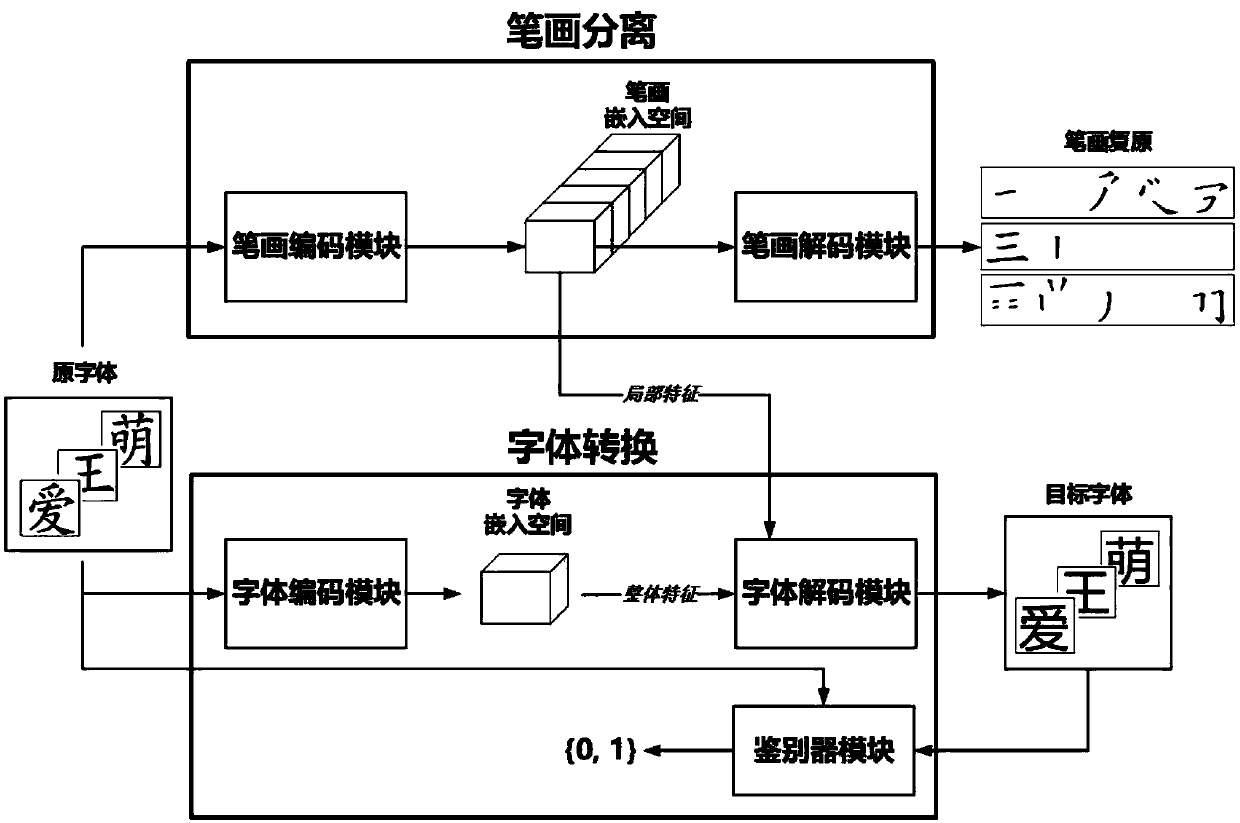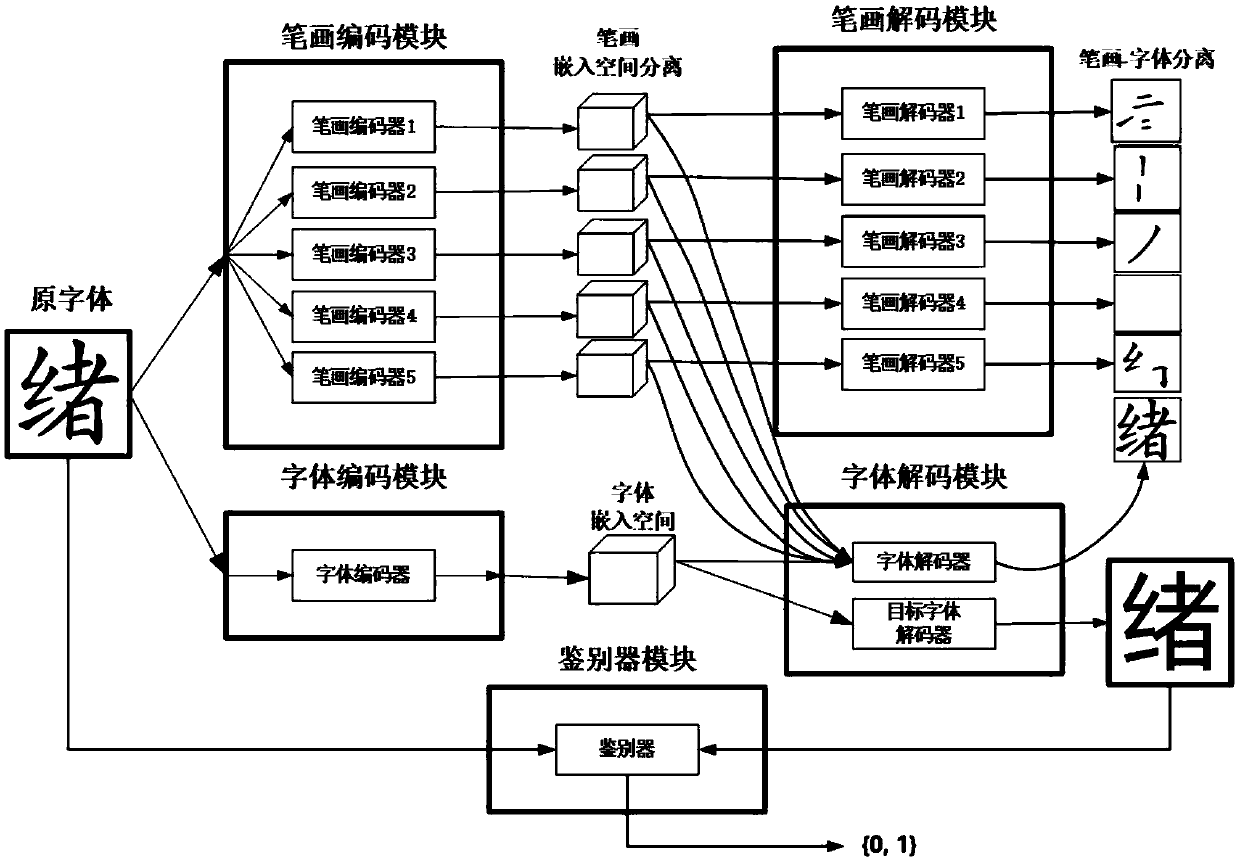Chinese font conversion and generation method based on small number of target fonts
A font and target technology, applied in the field of Chinese character font conversion and generation based on a small number of target fonts, can solve the problems of a large number of training samples, high complexity of the deformation algorithm, and the shape of the font skeleton should not be too different, so as to achieve less training time and fewer parameters. The effect of less and less workload
- Summary
- Abstract
- Description
- Claims
- Application Information
AI Technical Summary
Problems solved by technology
Method used
Image
Examples
Embodiment
[0065] Example figure 1 As shown, the present invention is a method for converting and generating Chinese characters based on a small number of target fonts. The Chinese characters in the original font are input, and stroke separation and font conversion are performed in sequence. The stroke separation is completed by the stroke encoding module and the stroke decoding module. Through the conversion from the original font to the original font strokes, the embedded spatial features of different types of strokes in the original font are separated, and used as the local features of the original font. Font conversion consists of font encoding module, font decoding module and discriminator module. The font encoding module extracts the overall features of the original font; the font decoding module fuses the overall and local features of the original font to form multi-scale features of the original font, and converts them into Chinese characters of the target font; the discriminator...
PUM
 Login to View More
Login to View More Abstract
Description
Claims
Application Information
 Login to View More
Login to View More - R&D
- Intellectual Property
- Life Sciences
- Materials
- Tech Scout
- Unparalleled Data Quality
- Higher Quality Content
- 60% Fewer Hallucinations
Browse by: Latest US Patents, China's latest patents, Technical Efficacy Thesaurus, Application Domain, Technology Topic, Popular Technical Reports.
© 2025 PatSnap. All rights reserved.Legal|Privacy policy|Modern Slavery Act Transparency Statement|Sitemap|About US| Contact US: help@patsnap.com



